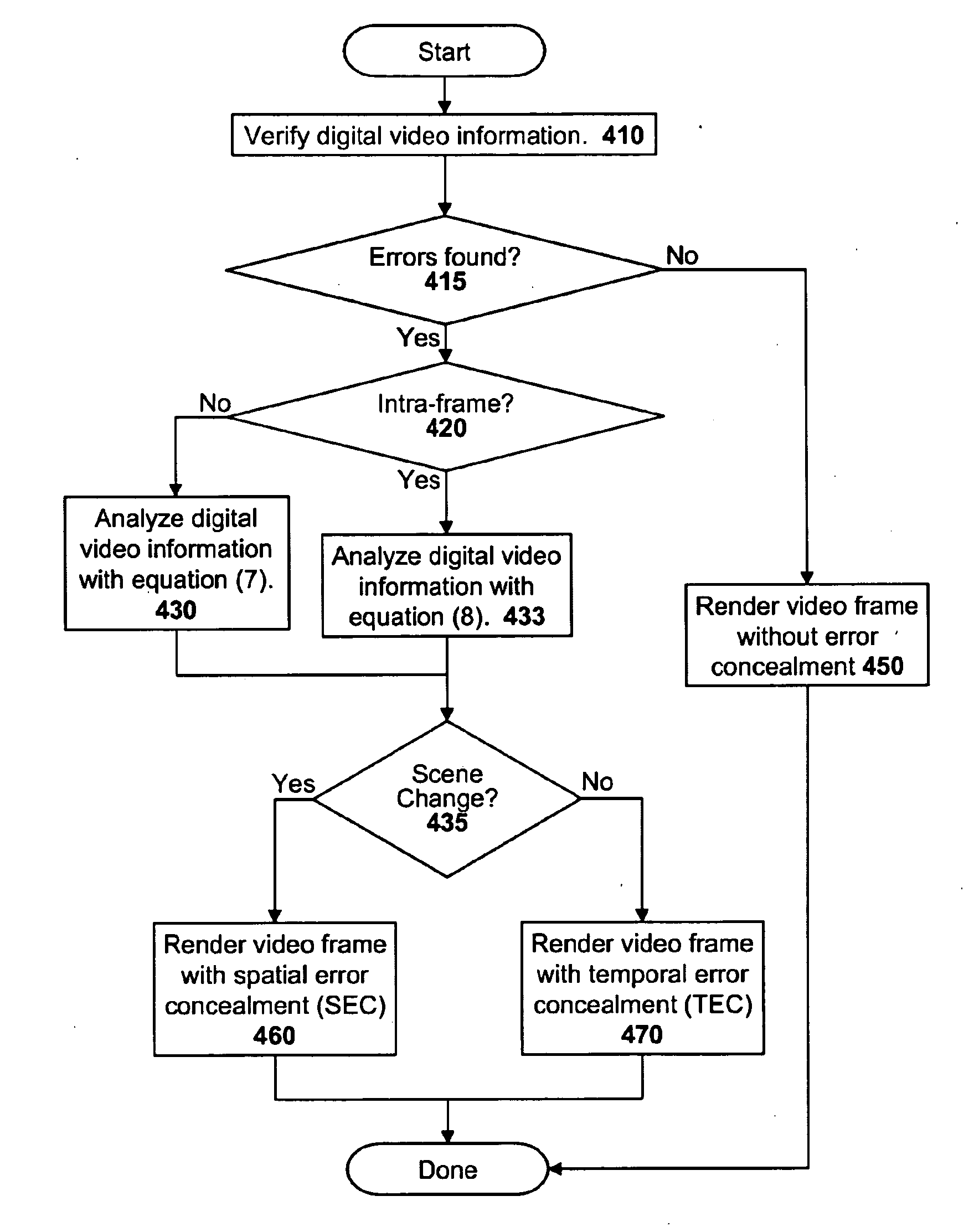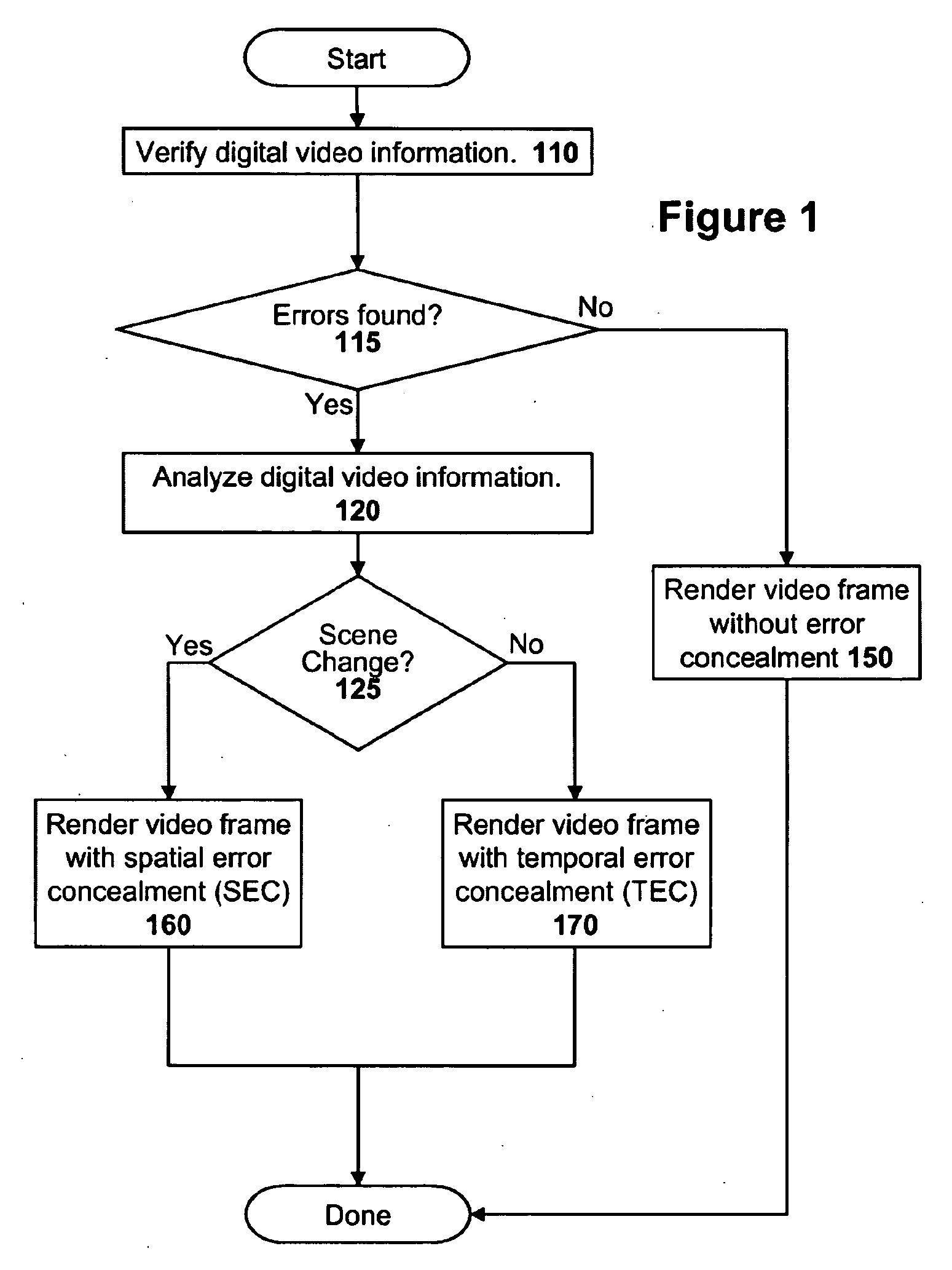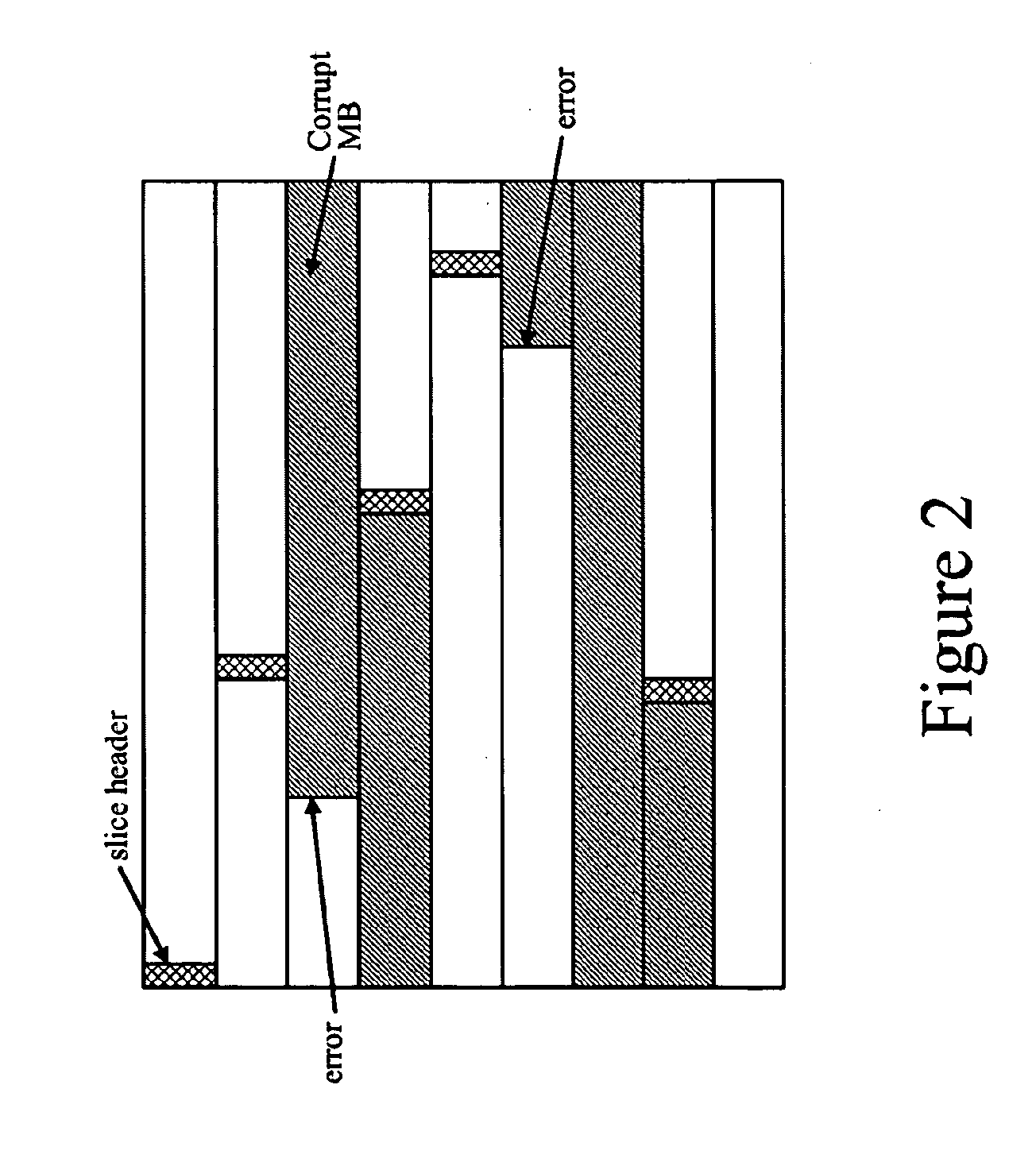Methods of Performing Spatial Error Concealment For Digital Video
a technology of digital video and spatial error, applied in the field of digital video decoding and display, can solve the problems of degrading transmitted wireless signals, information loss, and digital wireless communication always subject to information loss, and achieve the effect of high-quality digital video error concealmen
- Summary
- Abstract
- Description
- Claims
- Application Information
AI Technical Summary
Benefits of technology
Problems solved by technology
Method used
Image
Examples
case 1
[0089] Case 1 requires that at least one of the adjacent three pixels in three neighboring macroblocks (below, right, and lower right) be available. Specifically, referring to FIG. 6A, one of area F′s three closest neighbors α, β and γ must be in a non-corrupt macroblocks. Case 1 is further divided into the following four sub-cases 1.1 to 1.4:
case 1.1
[0090] Case 1.1 occurs when all of the three surrounding pixels α, β and γ are available (all of the pixels are in non-corrupt macroblocks). When three surrounding pixels α, β and γ are available, then the corner pixel of area F is reconstructed using the median adaptive predictor with:
x(15,15)={min(x(16,15),x(15,16))ifx(16,16)≥max(x(16,15),x(15,16))max(x(16,15),x(15,16))ifx(16,16)≤min(x(16,15),x(15,16))x(16,15)+x(15,16)-x(16,16)otherwise(12)
[0091]The original median adaptive predictor, designed to compress images losslessly, is a nonlinear predictor to predict a current pixel x by three surrounding pixels p, q and r as illustrated in FIG. 6B. It assumes that a vertical edges lies above x if r≧q≧p or r≦q≦p, and a horizontal edge lies above x if r≧p≧q or r≦p≦q. Note that the three surrounding pixels used to reconstruct area F are different from those in the original median adaptive predictor.
case 1.2
[0092] Case 1.2 is used when both pixels α and β of FIG. 6A are in non-corrupt macroblocks (but y is not available since that would be case 1.1). In case 1.2, the corner pixel of area F is reconstructed using pixel averaging with the following equation:
x(15,15)=(x(16,15)+x(15,16)+1)2(13)
wherein the divide by two operation may be performed with a shift right operation (>>1).
PUM
 Login to View More
Login to View More Abstract
Description
Claims
Application Information
 Login to View More
Login to View More - R&D
- Intellectual Property
- Life Sciences
- Materials
- Tech Scout
- Unparalleled Data Quality
- Higher Quality Content
- 60% Fewer Hallucinations
Browse by: Latest US Patents, China's latest patents, Technical Efficacy Thesaurus, Application Domain, Technology Topic, Popular Technical Reports.
© 2025 PatSnap. All rights reserved.Legal|Privacy policy|Modern Slavery Act Transparency Statement|Sitemap|About US| Contact US: help@patsnap.com



